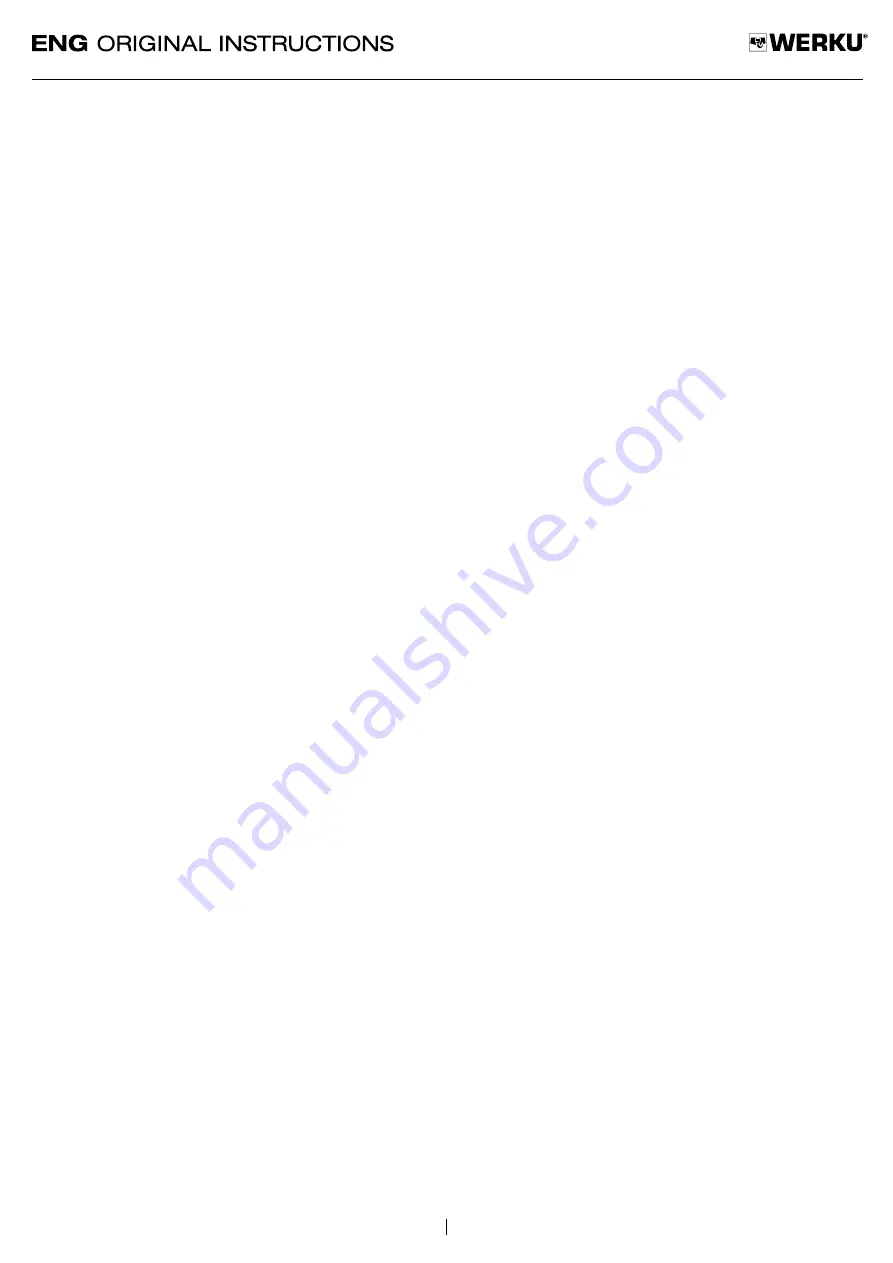
English
5
from dust, dirt and grease.
Make sure that the paint
being used is correctly mixed and free from lumps
and other particles.
A large number of liquids can
be sprayed using the paint spray gun, but always
check the manufacturer’s instructions on these pro-
ducts before using them.
PAINT VISCOSITY LEVEL.
Remember that most paints are supplied ready for
application using brushes or rollers, and are not
suitable for use with the paint spray gun if they are
not previously diluted.
The viscometer will help to
decide the correct degree of viscosity of the paint
to be used (2).
First, fill the paint viscometer to
the top.
Calculate the time the viscometer takes
to empty completely.
In general, the viscosity of a
normal product is determined by emptying times
from 15 to 30 sec.
In general, emptying times for
the viscometer for different types of material are
as follows:
Plastic and latex paints:
24-28 sec
Water-based
paints:
20-25 sec
Varnishes:
20-25
sec
Oil-based paints:
18-20 sec
Enamel
paints:
18-22 sec
Paints with aluminium:
20-25 sec
Wood sealants:
28-35 sec
If the paint takes an excessive amount of time to emp-
ty out of the viscometer, it means it has to be diluted
further.
To avoid wasting paint, use small amounts of
the product for viscosity testing, and use the visco-
meter once you have obtained the correct degree of
viscosity for the paint.
Remember that some paints
may contain solid particles, and will have to be filte
-
red before filling the cup with paint to prevent dama
-
ging the paint spray gun.
IMPORTANT - FLASH POINT
Do not use this paint spray gun for paints or liquids
with a flash point above 55ºC.
CLEANING AND ASSEMBLING THE CUP.
Fill the paint spray gun’s cup by unscrewing it from
its position (3).
Fill the cup with paint of a suitable
viscosity and screw it back into the paint spray gun.
Make sure that the cup is firmly screwed back in pla
-
ce.
Make sure that the cup is filled before it empties
completely, to prevent the gun from operating empty,
as this may cause damage to it.
START.
Insert firmly the air hose coupling into the connec
-
tion at the rear of the paint spray gun and into the
base (4).
Press the On/Off switch (5).
SPRAY ADJUSTMENT.
The amount of product sprayed by the paint spray
gun can be regulated using the fluid adjuster (6).
Before starting up the paint spray gun, make sure
that the nozzle and its retaining nut are firmly ad
-
justed.
Fill the paint cup with a product with the co-
rrect viscosity that has been correctly filtered.
Point
the paint spray gun at a test section and press the
switch until the paint starts to be pulverized by the
nozzle (7).
Change the spray diameter using the
fluid adjuster until it pulverizes the product perfectly.
By turning the adjuster to the right, less product is
sprayed (8).
By turning the adjuster to the left, more
product is sprayed (9).
SPRAYING TECHNIQUES.
For best results keep the paint spray gun level and
parallel to the surface being painted at all times.
Hold
the paint spray gun 25-30 cm from the working sur-
face and spray evenly from left to right and up and
down with slow movements.
Do not spray at an an-
gle, as this will cause the paint to form droplets on the
surface.
When spraying large areas, use a correct
working plan (10).
Spray moving the arms and not
the wrist.
Control the speed of the paint spray gun
to achieve a smooth, regular movement.
Moving too
quickly will cause the paint layer to be too thin.
Si-
milarly, moving too slowly will cause the paint layer
to be too thick.
Apply the coats of paint one by one,
leaving them to dry for the times indicated by the ma-
nufacturer.
MAINTENANCE.
The paint spray gun has been designed for a long
working life with minimum maintenance.
Optimum
use depends on correct care of the paint spray gun
and regular cleaning.
To prevent accidents, always
unplug the paint spray gun from the power source
before cleaning or performing any maintenance.
The
paint spray gun may be cleaned effectively using
compressed air after each use.
If compressed air is
not available, use a brush to remove dust from the
paint spray gun.
Motor ventilation vents and switch
levers must be dept clean and free of foreign matter.
Do not attempt to clean by inserting pointed objects
through openings.
Cetain cleaning agents and solvents
damage plastic parts, among them are gasoline, carbon
tetrachloride, chlorinated cleaning solvents, ammonia
Содержание WK401210
Страница 40: ...40 WK401210 1 1 2 2 3 3 4 4 5 5 7 7 8 8 6 6...
Страница 41: ...41 WK401210 9 9 10 10...
Страница 42: ...42 WK401210...
Страница 43: ...43 WK401210...






































